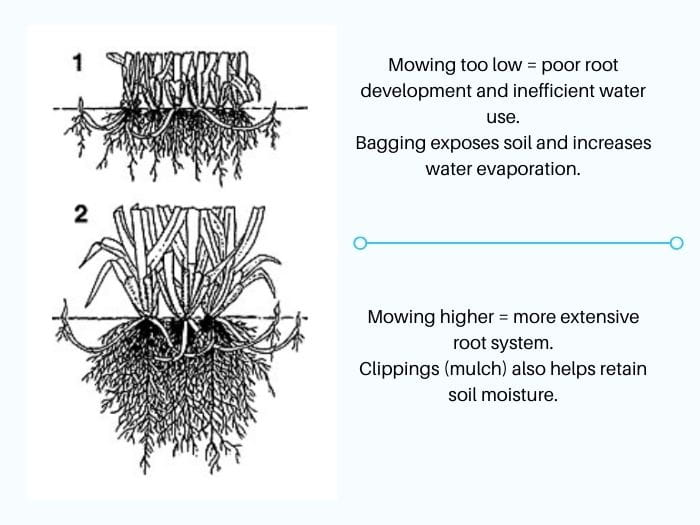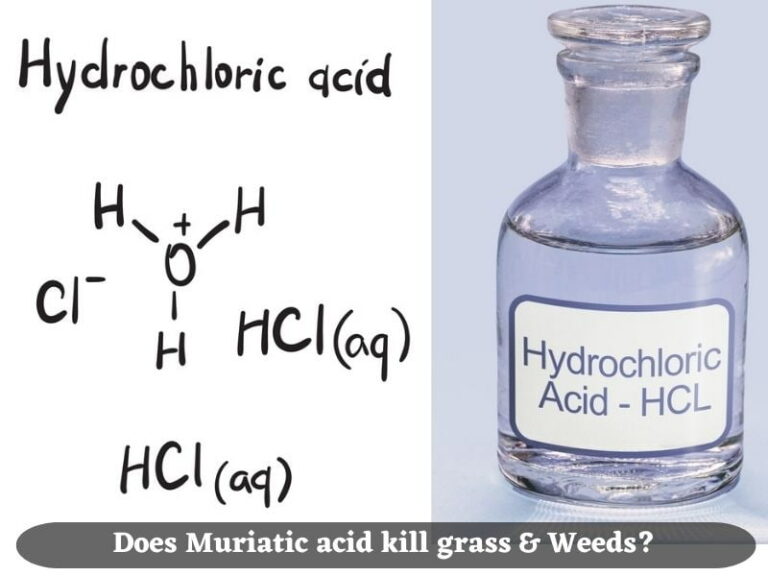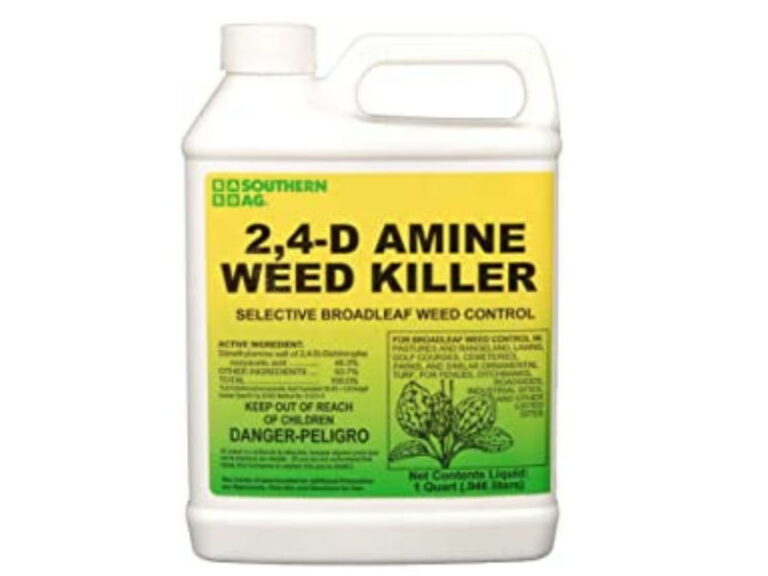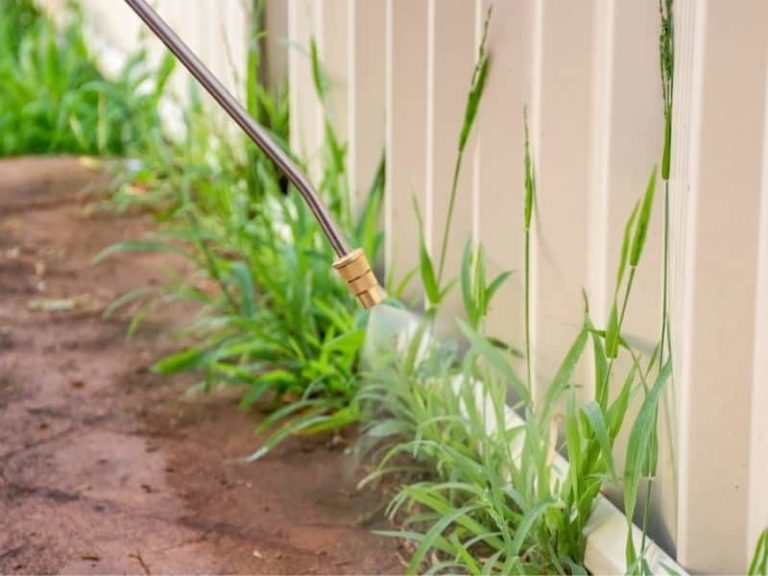Should I Bag Grass Clippings If I Have Weeds?
Mowing is an important practice that not only helps lawns grow thicker but also appear to be well-manicured. But did you know that the wind generated by the lawnmower’s blade can spread weeds up to 10 feet away? So, should you bag clippings if you have weeds in your lawn to prevent them from spreading?
You should bag grass clippings if your lawn is infested with weeds such as crabgrass, ground ivy, and dandelions especially when they have seedheads. Collecting clippings as you mow reduces the spread of weeds to other areas of the lawn. Bag the grass clippings for 3-5 mowing cycles before mulching again.
You can control grassy weeds as well as broadleaf weeds by maintaining a thick lawn that chokes the pests out. This means frequently mowing your lawn to help turfgrass grow dense. But how should you mow to control weeds? Does bagging the clippings prevent weeds from spreading.

Is bagging important when mowing?
Yes, bagging is important when mowing especially when you do not want to spread disease and weeds all over the lawn. If the lawn is healthy and weedless, leave the grass clippings as you mow to add nutrients (nitrogen) to your lawn.
Here’s when bagging important when mowing lawns?
- When the grass is too tall and the clippings cover the lawn, preventing nutrients from reaching the grass below.
- If the lawn has disease, such as brown patch fungal disease. Bagging the clippings will prevent the spread of disease in your lawn especially when mowing a wet lawn.
- When too many leaves are littering your lawn in the fall, bagging the grass clippings along with the leaves will save you time raking your lawn.
- If your lawn has weeds and bagging will prevent the further spread of weed seeds.
I sometimes find bagging to be a neat affair compared to when the clippings are left on top of the grass to turn brown, die, and rot.
Should I Bag Grass Clippings if I have Weeds?
Yes, you should bag your grass clippings if you have weeds in your lawn so that your lawn mower does not spread any weed seeds all over the lawn. If you’ve treated your lawn with a herbicide, do not use the clippings as mulch as it can harm your turfgrass.
Herbicides that kill crabgrass, dandelions, creeping charlie, and clover can harm the lawn especially if clippings of treated grass lie thick on the grass blades with limited supply of oxygen. This is why it is important to bag the clippings as a preventative measure for turf destruction.
Also, weeds in clippings can re-root, especially if they are grassy weeds that spread through rhizomes and stolons. Common weeds that can spread when their cuttings are left on the lawn include common bermuda grass and couch grass.
PRO TIP!
Run the lawnmower over your lawn immediately you see weeds starting to sprout above your turfgrass even if your lawn does not need mowing. The mower will not harm your grass if the blades have not grown to their cutting height. Set your mower at a higher cutting height not to harm your grass to help control fast-growing weeds.
Does Mowing Spread Weeds in the Lawn?
Yes, mowing can spread weeds as the blade propels the seeds 5 to 10 feet away from the cutting zone. Weeds and weed seeds can also get stuck on the deck and the under-carriage of your lawn mower. The seeds can fall and germinate in other parts of your lawn thus spreading faster. Weeds can also spread through runners.
Additionally, if you used the mower on a lawn with weeds and failed to clean the mower, it can easily introduce the weeds from the other lawn to your lawn.
Therefore, bag your clippings if your lawn has weeds to stop the further growth of weeds.
See also: How to Kill Crabgrass in Your Lawn
How to Prevent Your Lawn Mower from Spreading Weeds
Here are a few tips that can prevent the spread of weeds on your lawn when mowing.
- Clean your mower- Always clean your mower after mowing a lawn that weeds have contaminated. If the weed growth is out of control, you’d rather cut grass in two rounds. First, mow the parts of the lawn that do not have weeds, then mow the parts infested with weeds. Clean the mower when you finish.
- Mow your grass to the right height – Do not cut your grass too short because it can weaken the grass, making it easier for the weeds to overtake it. Short grass can also open bare spots where weeds can reach the soil, germinate, and grow.
See also: Where to Dump Grass Clippings?
When Should You Mulch With Clippings (And Why?)

You should mulch with grass clippings late fall to early spring. Mix the grass clippings into the soil to a depth of at least 8 inches. Add a ratio of two parts carbon releasing materials like sawdust, dry leaves, and hay to compliment the clippings.
Mulching generally helps add organic matter and nutrients into the soil. Here are great reasons to mulch your lawn:
- Clippings are a great soil amendment because they provide up to 25% of your lawn’s total fertilizer needs. Grass cuttings contain nitrogen, potassium, and phosphorus which are are required for healthy turfgrass development.
- When grass clippings decompose, they can also serve as a source of food for the bacteria in the soil which is beneficial to your lawn.
- You should also mulch your grass clippings because it reduces waste. Mulching grass clippings eliminates the need to use plastic bags for bagging. The clippings decompose fast unlike the plastic bags used to bag clippings which do not decompose and pollute the environment.
- Grass clippings hydrate your lawn since they’re 80% water. In essence, you are watering your lawn by mulching with them. Mulching with clippings also helps retain moisture in the soil. It prevents water evaporation by providing shade from excess sunlight to the soil. It also reduces water run-off during rainy seasons.
- It saves the time and money spent for raking, bagging, and handling grass clippings.
You should mulch your clippings because mulching saves time, money, labour, reduces waste and is a great soil amendment. It removes the need for raking, bagging and hauling away your clippings.
Resources + References
- Sam Bauer et al, University of Minnesota Extension: What to do with lawn clippings
- Brad Fresenberg and Chris Starbuck, University of Missouri Extension: “Don’t Bag It” Lawn Care
- C.R. Wilson and T. Koski, Colorado State University Extension: Eliminate Grass Clipping Collection




